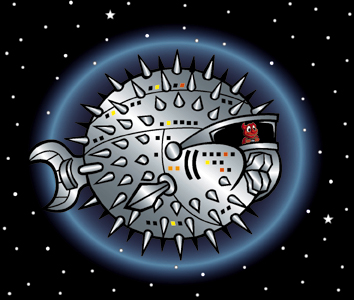Quick installer information for people familiar with OpenBSD, and the
use of the new "disklabel -E" command. If you are at all confused when
installing OpenBSD, read the relevant INSTALL.* file as listed above!
OpenBSD/i386:
Play with your BIOS options, and see if you can enable booting off a
CD; try using CD1. If not, write CD1:2.7/i386/floppy27.fs to a
floppy, then boot that. If you are mixing OpenBSD with another
operating system, you will surely need to read the INSTALL.i386
document.
To make a floppy under MS-DOS, use /2.7/tools/rawrite.exe. Under
Unix, use "dd if=<file> of=/dev/<device> bs=32k" (where device could
be "floppy" or "rfd0c" or "rfd0a"). Use properly formatted perfect
floppies with NO BAD BLOCKS or you will lose.
OpenBSD/sparc:
To boot off CD2, type "boot cdrom 2.7/sparc/bsd.rd", or
"b sd(0,6,0)2.7/sparc/bsd.rd" depending on your ROM version.
Alternatively, write CD2:2.7/sparc/floppy27.fs to a floppy and boot it
using "boot floppy" or "boot fd()" depending on your ROM version.
Finally, a third alternative is to write CD2:2.7/sparc/kc.fs and
CD2:2.7/sparc/inst.fs to two separate floppies. Then insert "kc.fs",
and boot as described above. As soon as the floppy drive ejects a
floppy, insert "inst.fs". Answer a bunch of questions. Reboot from
the "kc.fs" floppy. This time, when the floppy is ejected simply
re-insert "kc.fs" again and answer a different set of questions.
OpenBSD/amiga:
Create BSD partitions according to INSTALL.amiga's preparation section.
Mount the CD2 under AmigaOS as device CD0: Next, execute the following
CLI command: "CD0:2.7/amiga/utils/loadbsd CD0:2.7/amiga/bsd.rd".
OpenBSD/hp300:
You can boot over the network by following the instructions in
INSTALL.hp300.
OpenBSD/mac68k:
Boot MacOS as normal and partition your disk with the appropriate A/UX
configurations. Then, extract the Macside utilities from
CD1:2.7/mac68k/utils onto your hard disk. Run Mkfs to create your
filesystems on the A/UX partitions you just made. Then, use the
BSD/Mac68k Installer to copy all the sets in CD1:2.7/mac68k/ onto your
partitions. Finally, you will be ready to configure the BSD/Mac68k
Booter with the location of your kernel and boot the system.
OpenBSD/sun3:
Get the release via ftp. Then, you can either setup a diskless boot or
create an installation tape, as described in INSTALL.sun3.
Notes about the source code
src.tar.gz contains a source archive starting at /usr/src.
This file contains everything you need except for the kernel sources, which are
in a separate archive. To extract:
# mkdir -p /usr/src
# cd /usr/src
# tar xvfz /tmp/src.tar.gz
sys.tar.gz contains a source archive starting at /usr/src/sys.
This file contains all the kernel sources you need to rebuild kernels.
To extract:
# mkdir -p /usr/src/sys
# cd /usr/src
# tar xvfz /tmp/srcsys.tar.gz
Both of these trees are a regular CVS checkout. Using these trees it
is possible to get a head-start on using the anoncvs servers as
described here.
Using these files
results in a much faster initial CVS update than you could expect from
a fresh checkout of the full OpenBSD source tree.
Ports Tree
A ports tree archive is also provided. To extract:
# cd /usr
# tar xvfz /tmp/ports.tar.gz
The ports/ subdirectory is a checkout of the OpenBSD ports tree. Go
read https://www.OpenBSD.org/faq/faq15.html
if you know nothing about ports
at this point. This text is not a manual of how to use ports.
Rather, it is a set of notes meant to kickstart the user on the
OpenBSD ports system.
Certainly, the OpenBSD ports system is not complete. This is because
the full integration of ports into the OpenBSD environment is still a
young project as of this release. We believe the ports that are
provided here are stable, but it is most important to realize that
ports will continue to grow a great deal in functionality in the
future.
As we said, ports will be growing a lot in the future. The ports/
directory represents a CVS (see the manpage for cvs(1) if you aren't
familiar with CVS) checkout of our ports. As with our complete source
tree, our ports tree is available via anoncvs. So, in
order to keep current with it, you must make the ports/ tree
available on a read-write medium and update the tree with a command
like:
# cd [portsdir]/; cvs -d anoncvs@server.openbsd.org:/cvs update -Pd
[Of course, you must replace the local directory and server name here
with the location of your ports collection and a nearby anoncvs
server.]
Again, it is important to see the webpage for specific instructions as
this is a new service which hasn't yet been ironed out
completely.
Finally, despite ports' youth, help is never far. If you're
interested in seeing a port added, would like to help out, or just
would like to know more, the mailing list
ports@openbsd.org is a good place to know.
